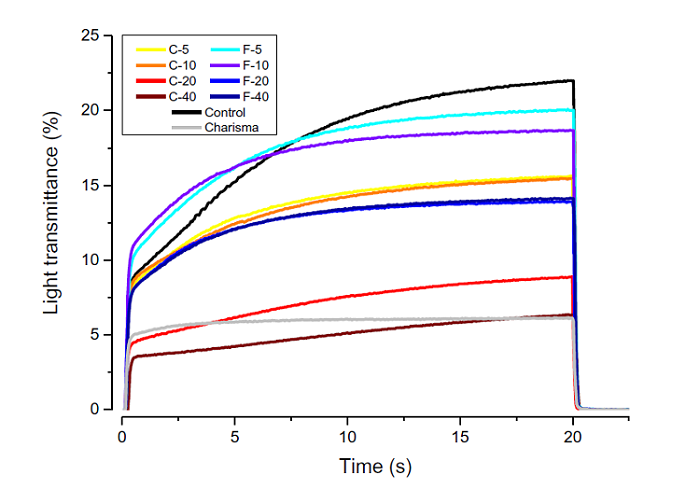This website uses cookies to ensure a better user experience.
To get more information, please read our Cookie Statement.
Polymerization kinetics of experimental resin composites functionalized with conventional (45S5) and a customized low-sodium fluoride-containing bioactive glass
Our colleague Hrvoje Skenderović in collaboration with scientists from School of Dental Medicine in Zagreb and University of Zurich recently published results of their research on the in vitro investigation of polymerization kinetics and curing light transmittance of two series of experimental dental resin composites filled with bioactive glasses in prestigious journal Scientific Reports.
Polymerization kinetics of experimental resin composites functionalized with conventional (45S5) and a customized low-sodium fluoride-containing bioactive glass
Matej Par, Katica Prskalo, Tobias T. Tauböck, Hrvoje Skenderović, Thomas Attin, Zrinka Tarle, Sci Rep 11, 21225 (2021).
DOI: https://doi.org/10.1038/s41598-021-00774-w
Dental resin composites, a versatile material class for various dental applications, are based on mixtures of multifunctional methacrylate resins filled with silanized glass/silica/ zirconia particles of heterogeneous sizes. The composites are rendered photosensitive using blue light-absorbing compounds, which makes them capable of on-demand setting through free radical-mediated polymerization of methacrylate groups. The formation of the polymer network during the setting of resin composites is a complex reaction which occurs in a medium of rapidly increasing viscosity. The mobility of reactive species declines as polymerization advances, leading to complex crosslinked networks that eventually become immobilized, hindering further polymerization and leaving a fraction of C=C double bonds unreacted. Among various reactive additives for resin composites, bioactive glasses (BG) are especially interesting due to their superb capabilities to enhance the quality of a dental composite.
This study investigated the polymerization kinetics of two series of experimental composites filled with 0–40 wt% of either BG 45S5 or a customized low-Na F-containing BG. As an important determining factor for light-activated polymerization, light transmittance through the composite materials was additionally investigated.
Figure 1. Averaged curves (n=5) of light transmittance through 2-mm composite layers as a function of time.
In this in vitro study, a customized low-Na F-containing bioactive glass showed favorable behavior for being used as a functional filler in light-curing dental resin composites. Unlike bioactive glass 45S5, which led to a dose-dependent reduction in the rate and extent of polymerization, the customized low-Na F-containing bioactive glass showed a negligible influence on polymerization. The reduction in light transmittance of experimental composites due to the addition of the low-Na F-containing bioactive glass did not translate into impaired polymerization kinetics.





